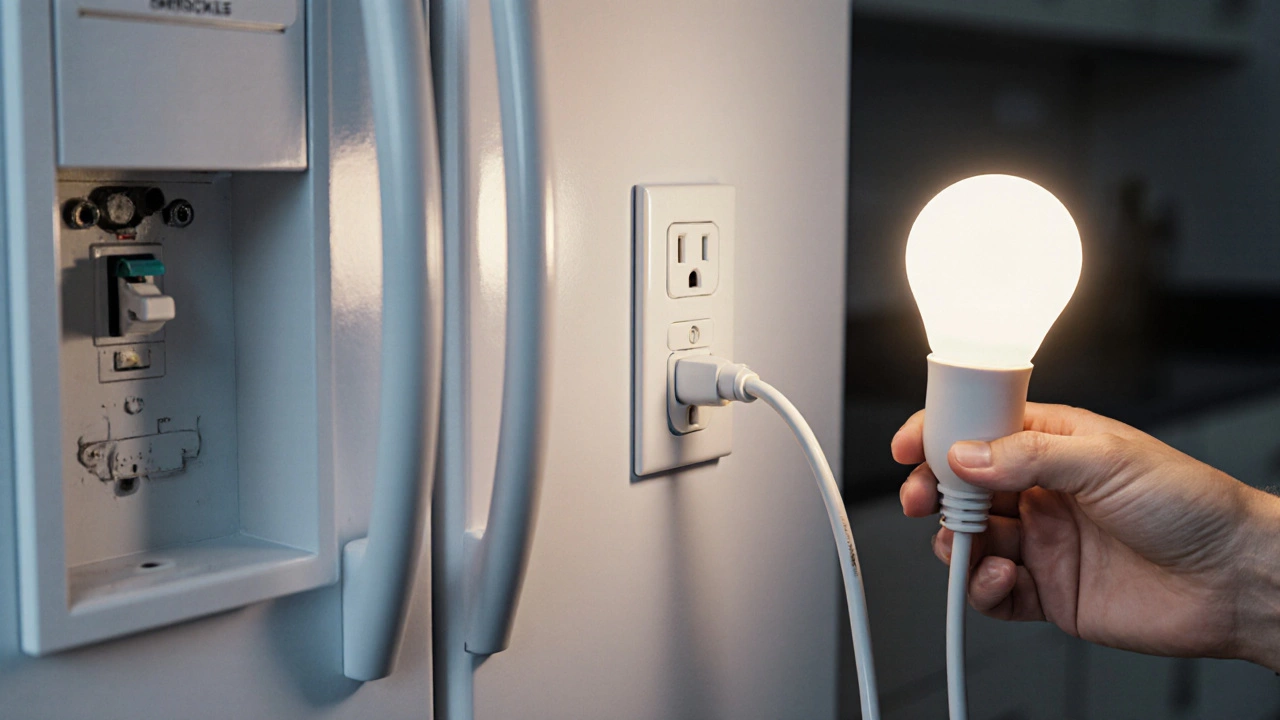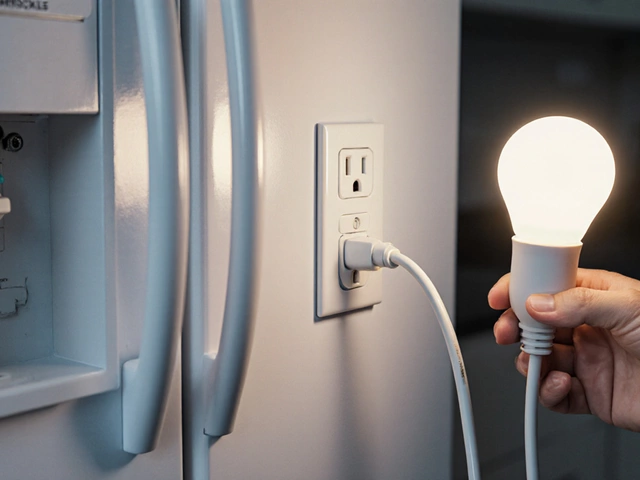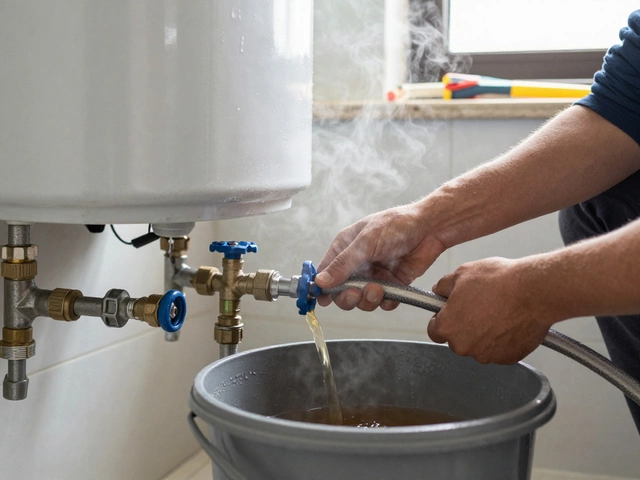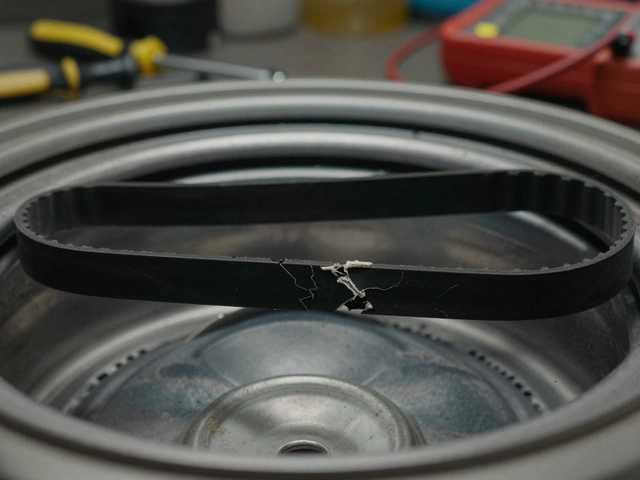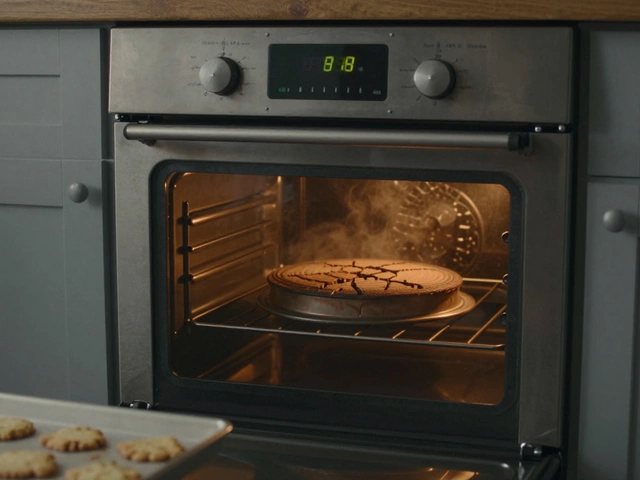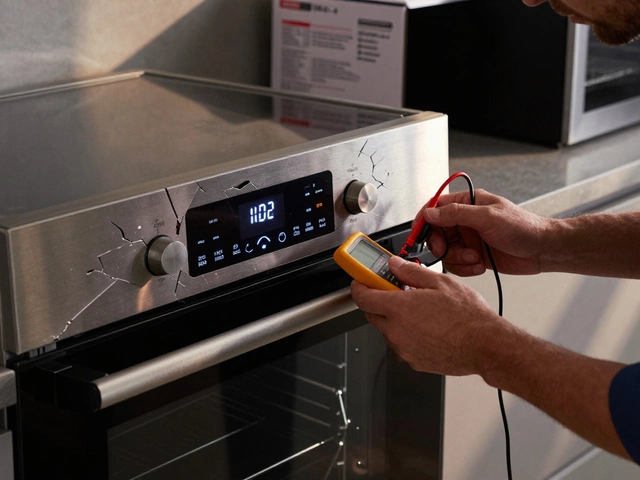Refrigerator Troubleshooting Guide
Select the symptoms you're experiencing to get personalized next steps for fixing your fridge.
When your Refrigerator stops cooling, the first thing you should verify is whether it’s actually getting power. Most of the time a simple power problem or a mis‑set thermostat is the culprit - you don’t need to pull apart the appliance right away. Below is a step‑by‑step guide that walks you through the most common checks, what they look like, and when it’s time to call in a professional.
Quick Overview
Think of a fridge like a tiny climate system. If the air isn’t moving, the temperature won’t drop. The easiest way to confirm that the system is even trying to run is to make sure electricity is reaching the unit and that the control settings are correct. From there you move on to the parts that actually move heat: the door seal, condenser coil, and compressor.
1. Verify the Power Supply
The most obvious place to start is the wall socket. Follow these sub‑steps:
- Check the Power cord the flexible cable that plugs the fridge into the outlet for any visible cuts or scorch marks.
- Plug another appliance (like a lamp) into the same outlet. If it doesn’t turn on, the wall socket is dead.
- Locate your home’s Circuit breaker the panel that distributes electricity to each circuit in your house. Look for a tripped switch - it will be in the middle position. Flip it fully to the OFF position, then back to ON.
- If the fridge still shows no signs of life (no humming, no lights), try a different outlet on a different circuit.
When the power is restored, the compressor should make a low humming sound within a minute. If you still hear nothing, move on to the thermostat.
2. Check the Thermostat Settings
Modern fridges usually have an electronic dial or digital panel that tells the appliance how cold to get. Mistakes happen:
- Make sure the dial isn’t set to “Freezer” or “Off”. The sweet spot for most models is around 37-40°F (3-4°C) for the fridge and 0°F (‑18°C) for the freezer.
- If your fridge uses a digital display, reset it by unplugging the unit for 2minutes, then plugging it back in.
- Some models have a separate Temperature sensor a probe that monitors interior temperature and signals the compressor. A faulty sensor can cause the fridge to think it’s already cold. Gently clean any dust from the sensor location (often at the back of the freezer compartment) and verify the thermostat is still set correctly.
If the fridge still doesn’t start cooling after confirming the thermostat, the next usual suspect is the door seal.
3. Inspect the Door Seal (Gasket)
A leaky door seal lets warm air creep in, making the compressor work harder or shut off entirely. Here’s how to test it:
- Close the door on a piece of paper or a dollar bill so it’s half‑in and half‑out.
- Try to pull the paper out. If it slides out easily, the gasket is compromised.
- Wipe the seal with warm, soapy water and a soft cloth. Build‑up of grime can also reduce its effectiveness.
- For a quick visual check, look for cracks, tears, or any areas where the gasket has pulled away from the frame.
Replacing a gasket is usually inexpensive and can be done without a technician. If the seal looks intact but the fridge still won’t cool, look at the condenser coil.
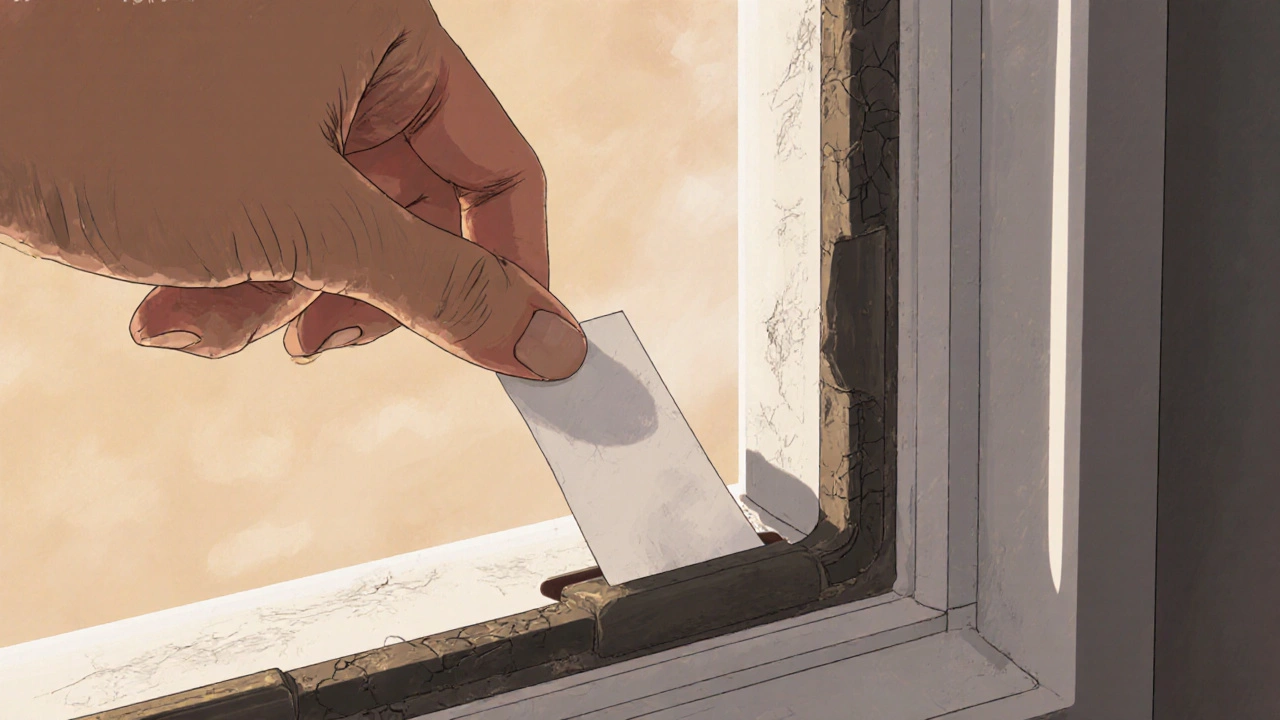
4. Examine the Condenser Coils
The coils, located either behind the fridge or underneath it, release heat from the refrigerant. Dust‑covered coils act like a clogged radiator.
- Unplug the fridge and pull it gently away from the wall.
- Use a vacuum with a brush attachment or a coil cleaning brush to remove dust, pet hair, and debris. Aim for a thorough clean - a minute or two on each section.
- Check the coil fins for bent sections. Straighten them with a fin comb if needed.
After cleaning, push the unit back, plug it in, and listen for the compressor kick‑in. If it still stays silent, the compressor itself may be the issue.
5. Listen for the Compressor
The compressor is the heart of the refrigeration cycle. It’s a metal box usually located at the back, near the bottom. Here’s what to look for:
- When the fridge is powered, you should hear a steady low‑pitch hum or a click as the start relay engages.
- If you hear a loud clicking noise followed by silence, the start relay may have failed.
- Absence of any noise after confirming power often points to a burnt‑out compressor.
Diagnosing a compressor problem typically requires a professional, as it involves handling refrigerant.
6. Test the Defrost System (if applicable)
Many modern fridges have an automatic defrost cycle. A failed defrost timer or heater can cause ice buildup, which blocks airflow and makes the fridge feel “warm”.
- Check the freezer for excessive frost - more than a thin layer.
- If you find ice coating the evaporator coils, manually defrost by unplugging the unit for several hours.
- After it’s dry, plug it back. If the problem recurs within 24hours, the defrost timer or heater may need replacement.
While you can troubleshoot this yourself, replacing the timer or heater usually calls for a technician because it involves removing panels.
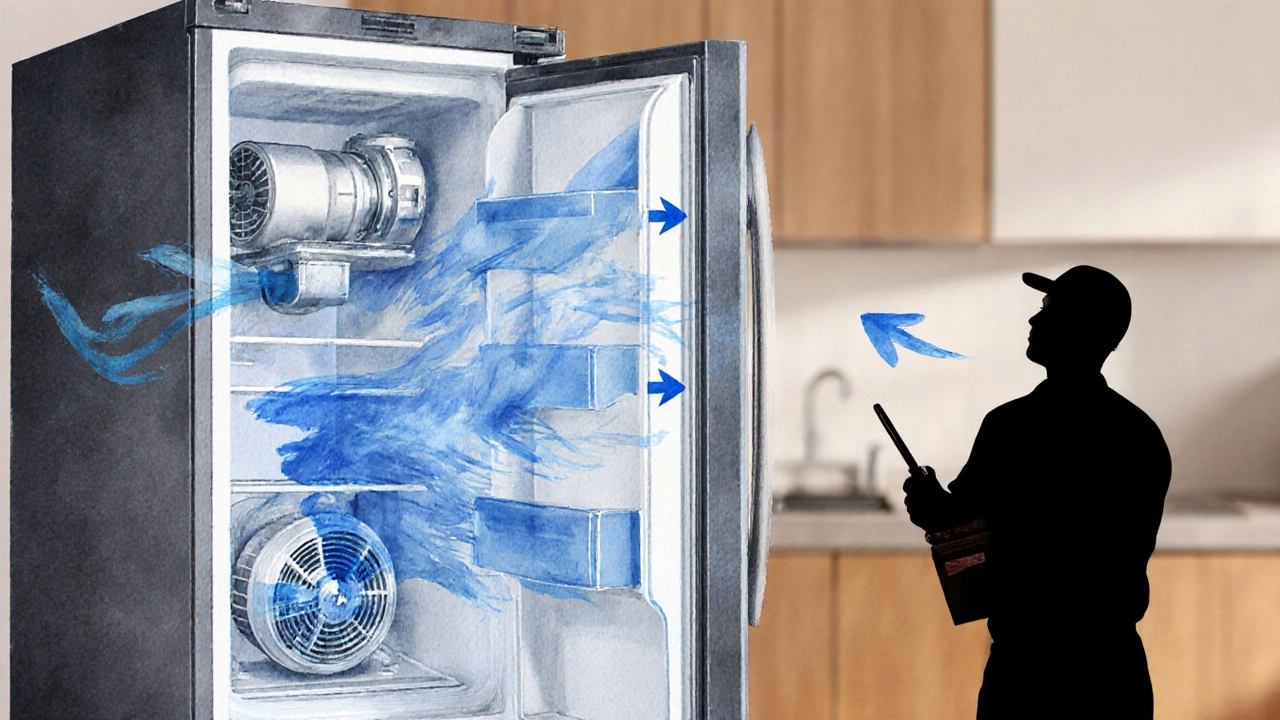
7. When to Call a Professional
Even if you’ve walked through all the steps, some issues still need a certified repair person:
- Compressor won’t start after power and coil checks.
- Persistent temperature sensor errors after cleaning.
- Refrigerant leaks - you’ll notice oily spots or a sudden loss of cooling after a short repair.
- Electrical components like the main control board, start relay, or defrost timer are faulty.
Most reputable technicians will quote a diagnostic fee and give you a clear price before proceeding.
Quick fridge repair checklist
| Issue | Symptom | First Check |
|---|---|---|
| Power loss | No lights, no hum, no cooling | Verify outlet, circuit breaker, power cord |
| Thermostat set wrong | Fridge warm despite power | Check dial or digital settings |
| Door seal leak | Frost buildup, warm spots | Paper test, visual inspection |
| Dirty condenser coils | Compressor runs constantly, hot back | Clean coils with brush/vacuum |
| Compressor failure | No humming, no cooling, possible click | Listen after power check |
| Defrost system error | Heavy frost in freezer, poor airflow | Inspect frost level, manual defrost |
Next Steps for Different Scenarios
If power is the issue: Reset the breaker, try another outlet, replace the cord if damaged.
If the thermostat is off: Adjust to recommended temperature, reset electronics.
If the seal is busted: Order a replacement gasket (most brands sell them by model number) and install it - usually a simple snap‑in.
If coils are dirty: Schedule a quarterly cleaning to keep the fridge efficient; a clear coil can save up to 15% on electricity.
If the compressor or defrost timer seems faulty: Contact a certified fridge repair service. Ask for a written estimate before any parts are ordered.
Frequently Asked Questions
Why does my fridge make a clicking sound but never cools?
A repeated click often means the start relay is trying to power the compressor but fails. Check the power supply first; if that’s fine, the relay or compressor likely needs replacement.
Can I use a surge protector for my refrigerator?
It’s not recommended. Refrigerators draw a high start‑up current that can trip many surge protectors. Use a dedicated outlet on a properly rated circuit.
My fridge is still warm after I cleaned the coils. What now?
If power and thermostat settings are correct, the next likely culprit is the compressor or the temperature sensor. At this point a professional diagnosis is the safest route.
How often should I clean the door gasket?
Wipe it down with warm soapy water every month and give it a deeper clean with a vinegar solution every 6months. Inspect for cracks during each cleaning.
Is it safe to unplug my fridge for a long cleaning?
Yes, as long as you keep the doors closed to prevent freezer burn. Let it sit unplugged for at least 2hours before moving or cleaning major components.

